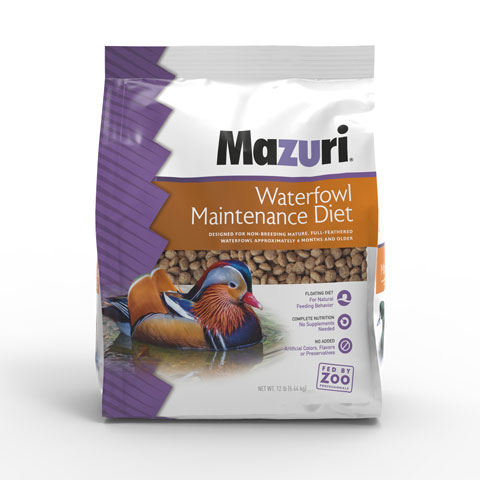Duck, Duck, Goose: Four Tips for Raising Waterfowl
Whether you’re looking for a unique pet or searching for new breeds to add to your backyard flock, waterfowl are a fun and entertaining addition!
Ducks, geese and swans are the most popular of the large, water-loving birds known as waterfowl. Like chickens, they’re relatively easy to feed and care for, and some even provide delicious eggs for your family.
Here are a few tips to successfully add waterfowl to your flock:
1. Choose a breed
There are dozens of beautiful and majestic ornamental duck, goose and swan breeds. Narrow your decision by searching for domesticated breeds that meet your needs. Further refine your decision by determining if you’re looking for a pet, breeding stock or egg layers.

If you’re looking for popular duck breeds for pets, consider Crested, Blue Swedish, Welsh Harlequins, Pekins, Rouen, Cayuga, Buff, Khaki Campbell and Swedish.
If you’re considering raising geese as pets, look for Embden, African, Buff, Toulouse, Pilgrim, Sebastopol, White or Brown Chinese, and Roman.
Wild waterfowl breeds are another option. Swans are bred successfully in managed care but are not domesticated like ducks and geese. They are wild waterfowl and governed by migratory waterfowl regulations. Investigate the rules in your area before buying swans. Popular backyard swan breeds include White Mute, Trumpeter, Whooper, Black Necked and Australian Black.
2. Make it feel like home
If you’re considering waterfowl, make sure you’re able to provide a comfortable environment. Waterfowl appreciate environments with:
-
A pond or pool for swimming. Note: Swans require larger bodies of water than a duck or goose.
-
Grassy areas to hunt insects and eat weeds.
-
A predator-proof coop or structure, along with an enclosed or fenced-in space, to keep them safe.
-
Friends! Waterfowl are social birds and happiest in pairs or small groups.
If you want a pet waterfowl, spend time handling, talking to and hand-feeding your ducklings, goslings and cygnets (baby swans) to help create early bonds and friendly personalities.
3. Find the right waterfowl feed
Feeding your waterfowl can be very easy. Most aquatic birds thrive on a simple diet formulated specifically for waterfowl. Look for a complete feed to support their health and energy levels.
Choose a nutritionally complete waterfowl feed based on the bird age and needs:
-
For mature, fully feathered waterfowl that are 6 months or older, choose Mazuri® Waterfowl Maintenance Diet.
-
During the spring breeding season, feed Mazuri® Waterfowl Breeder Diet to your flock. This diet supports ornamental duck, goose and swan breeding performance, egg numbers, fecundity (fertility) and chick viability.
-
For ducklings, goslings and cygnets, as well as adolescent birds, choose Mazuri® Waterfowl Starter – a diet high in protein and calories to help waterfowl grow strong and thrive during the first few months after hatching.
All Mazuri® waterfowl feeds float on top of the water, mimicking a bird’s natural feeding behavior and supporting their leg health by encouraging them to swim as they eat. Floating feed also limits water contamination, reduces waste and saves you money by allowing you to visually monitor their intake without overfeeding.
4. Skip the bread
People have fed stale bread to ducks, geese and swans for decades. However, in recent years, research has shown that feeding bread to waterfowl can lead to health concerns like obesity and malnutrition.
White bread is one of the worst offenders. It has low nutritional value to your waterfowl and is high in calories, making birds feel full without getting proper nutrition. Bread can also accumulate in the water, and trigger algae bloom or become moldy on the shore, which can be potentially fatal for ducks.
If you want to “treat” ducks, geese or swans, treat them to a high-quality, complete feed, like Mazuri® waterfowl feed.
Still have questions? Ask a Mazuri waterfowl expert.
